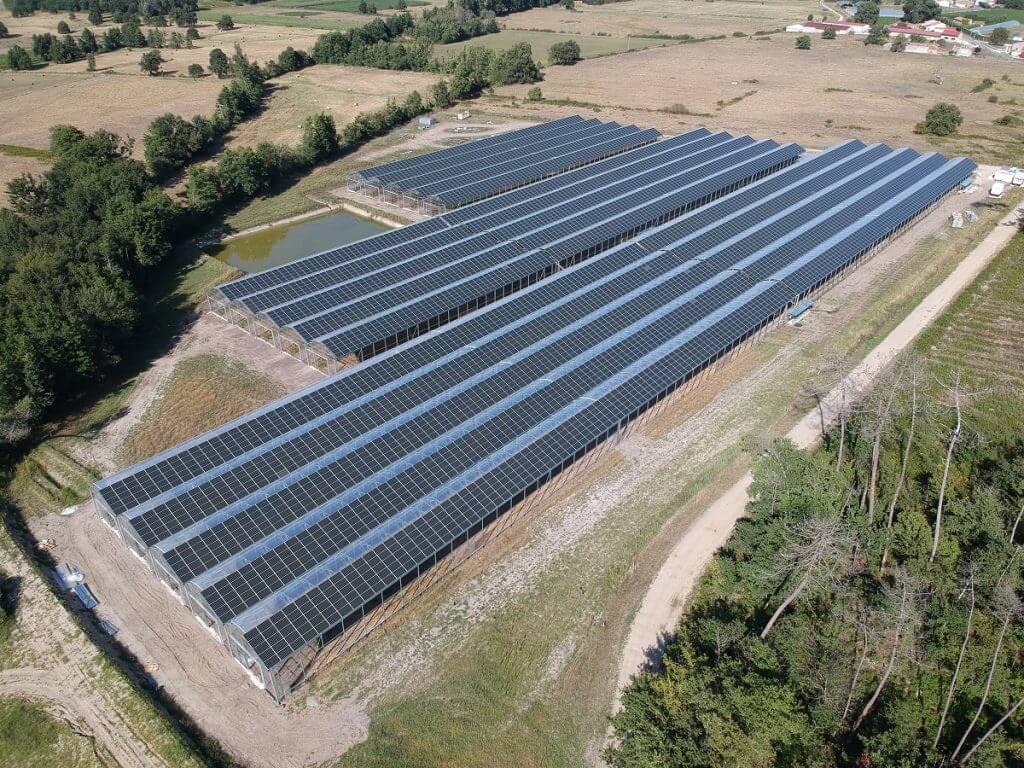Italy finds itself 10 to 12 years behind other nations when it comes to renewables development and installation figures, thanks to a distrust of renewable energy generation versus more recognized forms of energy production, primarily nuclear, gas, and “clean coal.”

INTEC Energy Solutions
Finally, though, acceptance of the necessity of clean power is dawning. Italy will need to add 50 GW of solar generation capacity by 2030 as part of 70 GW of new clean power facilities needed to meet European targets.
A notoriously sluggish permitting system has resulted in less than 1.5 GW per year of new photovoltaics, with around 800 MW added in 2020 and 940 MW in 2021, rising to around 2.5 GW last year. Residential solar, at least, has advanced markedly in the last two years.
The government has also set a target of sourcing 55% of Italian-generated electricity from renewables by 2050.
Solar has been boosted by regional residential-PV incentives and a move to simplify permitting for clean energy plants under the procedura abilitativa semplificata (PAS), which came into force in April 2022.
Italy’s European Union-funded, post-Covid economic recovery plan, the Piano Nazionale di Ripresa e Resilienza (PNRR) – approved in July 2021 – allocated €1.5 billion ($1.6 billion) for the installation of solar on agricultural buildings, referred to as “agrisolar,” and €1.1 billion for agrivoltaics. None of the PNRR funds were allotted to conventional, ground-mounted solar parks.
That was mainly because of permit delays for conventional ground-mounted solar. While the PNRR millions fired the starting gun on agrivoltaic projects with a generation capacity of more than 1 MW, the drawn-out nature of the “autorizzazione unica” central permitting process for photovoltaics, and the diverse planning policies of local governments, have led to inevitable development hold-ups for ground-mounted solar.
Project clusters
The PAS has at least shaken things up, with many projects that were awaiting autorizzazione unica approval withdrawn and resubmitted as clusters of smaller sites, with generation capacities no larger than 20 MW in order to be eligible for the simpler permitting process. Numerous projects, in fact, have reappeared with a capacity ceiling of 14 MW, as securing connection to the medium-voltage grid is far easier than to the high-voltage network applicable to larger sites.
The raised cost of agrivoltaics reflects the fact panels cannot be as tightly packed as in conventional ground-mounted sites, due to the requirements of the crops planted under and between them.
Expensive
INTEC Energy Solutions' experience is that agrivoltaic installations with panels installed anywhere from 2.1 m to 6 m off the ground require 30% to 60% more expense than ground-mounts, when it comes to their racking and installation cost. That is because more steel is needed and work is performed at height.
Working at height and removing the extra dust generated by farm vehicles adds 20% to 40% to agrivoltaic array operation and maintenance costs, versus ground-mounted sites.
The lower panel density means agrivoltaics require 10% to 40% more expense to generate electricity and an additional €20 to €50 payment per hectare is needed to cover the cost of mandatory statements by the farmer proving the continuation of agricultural production at such facilities.
Popular content
Those expenses ensure agrivoltaic sites are, on average, around 40% more expensive than ground-mounted facilities.
At INTEC, we are keenly following the progress of agrivoltaic-related legislation in Italy and also monitoring the details of projects our customers have submitted in pursuit of PNRR incentives.
There is great enthusiasm about the potential of agrivoltaics for Italy, and the Russia-Ukraine conflict has emphasized not only the European Union’s dependence on Russian gas – triggering a general energy crisis – but also a reliance on certain foodstuffs sourced from Ukraine.
The two problems must be tackled hand in hand and agrivoltaics represent an ideal method of ensuring agriculture and energy production coexist without imbalance.
Getting the policy right is essential to ensuring the nascent agrivoltaic and agrisolar sectors do not become another missed opportunity, with practically-inaccessible incentives for farmers.
Detail
At the time of writing, we are still awaiting detail of the operating rules for agrivoltaic systems to be eligible for public incentives and PNRR cash. Developers need to know what design, construction, and monitoring requirements will apply and how the PNRR eligibility of such sites will be verified.
Regarding agrisolar, on farm buildings, a tender for such arrays was issued on July 21. Online applications must be submitted to the organization set up for the purpose by government renewables body the Gestore dei Servizi Energetici (GSE), with an application window due to have opened on Sep. 12 and set to close today.
The tender included an increase in PNRR financial aid of up to 80% for companies involved in, or set to switch to primary agriculture; the option of multiple farms sharing consumption of the solar power they generate and of combining as single agrivolatic-project applicants; and a raising of the maximum eligible rooftop array generation capacity to 1 MWp.
The procurement document also doubled the previous maximum PNRR-eligible expenditure, up to €100,000 for accumulation systems, and to €30,000 for recharging devices, with a PNRR total per single project ceiling of €2.33 million.
About the author: Andrea Tedesco is country manager for Italy at INTEC Energy Solutions. He holds an MSc in electronics engineering and has solar industry experience as a senior project, technical, and area manager; sales and marketing director; and business unit manager. His expertise includes new-business and product development, project management, and building alliances and partnerships.
The views and opinions expressed in this article are the author’s own, and do not necessarily reflect those held by pv magazine.
This content is protected by copyright and may not be reused. If you want to cooperate with us and would like to reuse some of our content, please contact: editors@pv-magazine.com.


By submitting this form you agree to pv magazine using your data for the purposes of publishing your comment.
Your personal data will only be disclosed or otherwise transmitted to third parties for the purposes of spam filtering or if this is necessary for technical maintenance of the website. Any other transfer to third parties will not take place unless this is justified on the basis of applicable data protection regulations or if pv magazine is legally obliged to do so.
You may revoke this consent at any time with effect for the future, in which case your personal data will be deleted immediately. Otherwise, your data will be deleted if pv magazine has processed your request or the purpose of data storage is fulfilled.
Further information on data privacy can be found in our Data Protection Policy.